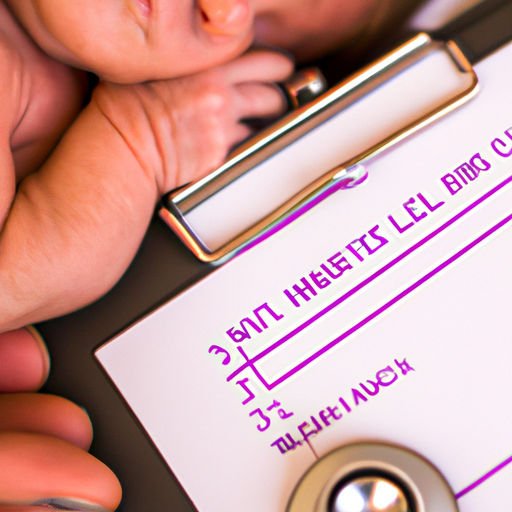Performing a Newborn Exam: A Step-by-Step Guide
Performing a thorough newborn exam is a crucial part of ensuring the health and well-being of a newborn baby. This comprehensive assessment allows healthcare professionals to identify any potential issues or abnormalities early on. In this article, we will provide a step-by-step guide on how to perform a newborn exam.
Step 1: Preparation
Before beginning the exam, it is essential to create a comfortable and safe environment for the baby. Ensure that the room is warm and well-lit. Gather all the necessary equipment, including a stethoscope, thermometer, measuring tape, and a penlight.
Step 2: Observation
Start by observing the baby’s general appearance. Look for any signs of distress, abnormal movements, or unusual features. Note the baby’s skin color, breathing pattern, and muscle tone. Assess the baby’s level of alertness and responsiveness.
Step 3: Vital Signs
Next, measure the baby’s vital signs. Use a thermometer to take the baby’s temperature, ensuring it is within the normal range of 97.7°F to 99.5°F (36.5°C to 37.5°C). Check the baby’s heart rate using a stethoscope, aiming for a range of 100 to 160 beats per minute. Measure the baby’s respiratory rate, which should be between 30 to 60 breaths per minute.
Step 4: Head and Neck Examination
Carefully examine the baby’s head and neck. Check for any abnormalities in the shape of the head, fontanelles (soft spots), or the presence of any masses. Assess the baby’s neck for any stiffness or limited range of motion.
Step 5: Eye Examination
Inspect the baby’s eyes for any redness, discharge, or abnormal appearance. Shine a penlight into each eye to assess the pupillary response. Note any signs of strabismus (crossed eyes) or nystagmus (involuntary eye movements).
Step 6: Ear Examination
Examine the baby’s ears for any abnormalities in shape, position, or discharge. Gently pull the earlobe to visualize the ear canal and check for any signs of infection or blockage.
Step 7: Mouth Examination
Open the baby’s mouth and inspect the gums, tongue, and roof of the mouth. Look for any signs of thrush (white patches), cleft palate, or tongue-tie. Count the number of teeth present, if any.
Step 8: Chest and Heart Examination
Listen to the baby’s heart using a stethoscope to assess the heart sounds and rhythm. Pay attention to any murmurs or abnormal sounds. Observe the baby’s chest for any retractions or abnormal breathing patterns.
Step 9: Abdominal Examination
Gently palpate the baby’s abdomen to check for any masses, tenderness, or distention. Observe the umbilical cord for any signs of infection or herniation. Assess the baby’s bowel sounds.
Step 10: Genital Examination
Perform a genital examination, noting the appearance of the genitals and any abnormalities. In male infants, check for the presence of both testicles in the scrotum. In female infants, inspect the labia and vaginal opening.
Step 11: Extremities and Spine Examination
Examine the baby’s extremities for any deformities, swelling, or limited range of motion. Assess the spine for any signs of curvature or abnormalities.
Step 12: Skin Examination
Finally, thoroughly examine the baby’s skin for any rashes, birthmarks, or lesions. Pay attention to any signs of jaundice or discoloration.
Conclusion
Performing a newborn exam requires attention to detail and a systematic approach. By following this step-by-step guide, healthcare professionals can ensure a comprehensive assessment of the baby’s health. Remember, early detection of any potential issues is crucial for providing timely interventions and promoting the well-being of the newborn.




